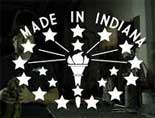| |
|
| |
|
 |
Supply
Chain by the Numbers |
| |
|
| |
- Aug. 16, 2013
|
| |
|
| |
|
| |
|
| |
US Factories Just Can't Get as Busy as they Used to Be; Consumers are Buying - but In Different Ways; A Lot of Stuff Is Made in Indiana; Coles Australia Gets Right After DIFOT Metric |
| |
|
| |
| |
| |
78.7%
|

|
|
|
| |
| |

|
28.2% |
Amazing percent of Indiana's state economy coming directly from the manufacturing sector. That versus the 12% of total US GDP that comes from manufacturing, though we should note that number understates the true impact, as the indirect economic output from manufacturing is even larger. What other states have a high share of manufacturing as a percent of their total GDPs? After Indiana in the top 10 comes Oregon - 27.8%; Louisiana - 22.6%; North Carolina - 19.4%; Wisconsin - 19.1%; Kentucky - 17.1%; Ohio - 17.1%; Iowa - 16.7%; Michigan - 16.5%; Alabama - 16.3%.
|
| |
| |
|
| |
| |
| |
92% |
|
The level that supplier deliveries that were DIFOT (Delivered In Full, On Time) fell to a few years ago to Cole’s, Australia’s second largest retail chain, well below the company’s targets, and leading to a sharp rise in out-of-stock levels at the store. Coles’ reacted with a multi-pronged attack, which included new supply chain technology, increased collaboration with suppliers, and training for buyers and merchandisers. The result: inventory reduction of some AU$300 million, a DIFOT number heading towards 99%, and a sharp reduction in stock-outs, according to Grant Enders, general manager replenishment at Coles, during a presentation at the Gartner Supply Chain Executive Conference in Melbourne.
|
| |
| |
| |
|
|
|
| |
 |
 |
| |
|
|
| |